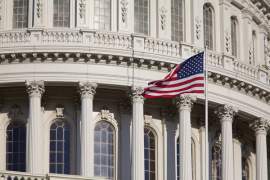
The Paris Convention of 1883

The Paris Convention is an international treaty that is currently administered by the World Intellectual Property Organization (WIPO) and based in Geneva Switzerland. The treaty was signed into effect on March 20, 1883 and was a milestone for international patent law because it paved the way for international patents and helped to enforce them for the first time.
Origin of the Treaty:
The Paris Convention was conceived to eliminate the threat of an inventor's work being stolen and used in another country where they would be free of any national patent laws protecting the invention. Inventors from around the world were reluctant to attend world fairs to display their new strides in technology.
In 1873, world leaders took notice that inventors did not attend the International Exhibition of Inventions in Vienna for fear that their work would be exploited. It was not long before diplomatic leaders met in Paris in 1880 to discuss this problem and likely ways to resolve it. They came up with international patent law and other intellectual property guidelines and three years later, it was signed into effect as the Paris Convention.
Content:
The Treaty also stresses the importance of priority for inventors. When a person within a contracting State files and successfully receives a patent for their invention, the inventor will be given "priority" over other inventors when perusing international patents. This is a period of six or twelve months (depending on the nature of the patent) in which the inventor must prepare patent applications to other countries.
Once patent applications are submitted to other countries within the limited time period, the filing date is handled as the original filing date of the initial patent the inventor received in his home country. This is important in international patent law because it gives an inventor ample time to prepare patents for submission in other countries, while giving the inventor an edge over other inventors in foreign countries. After the limited time period expires, the inventor may still file for international patents, though priority for the original filing date is no longer granted.
The Paris Convention Treaty gives further provisions in the third part pertaining to international patent law. Some main points given in this section state that a patent granted in one country does not guarantee that it will be approved in another country and other guidelines prohibiting the unethical abuse of patents.
Implications on International Patent Law:
The Paris Convention was the first successful international intellectual property treaty to emerge. It demonstrated that patents, which were a part of local laws for hundreds of years, needed an international standard so that protection could be granted on a global scale. It also proved to be an essential part of intellectual property law because it allowed innovative thinkers and creators to spread new ideas and inspire others, without the threat of having their work stolen and used in other countries.
It also benefited inventors by allowing them access for their work into foreign markets. In addition, the Paris Convention has become one of the largest international treaties in the world, enlisting 173 countries under its guidelines. This is a testament to its importance in intellectual property to protect the natural right to have exclusive rights to one's own work and for the growth of new ideas through inspiration.
NEXT: What is in the Paris Convention Treaty?




















